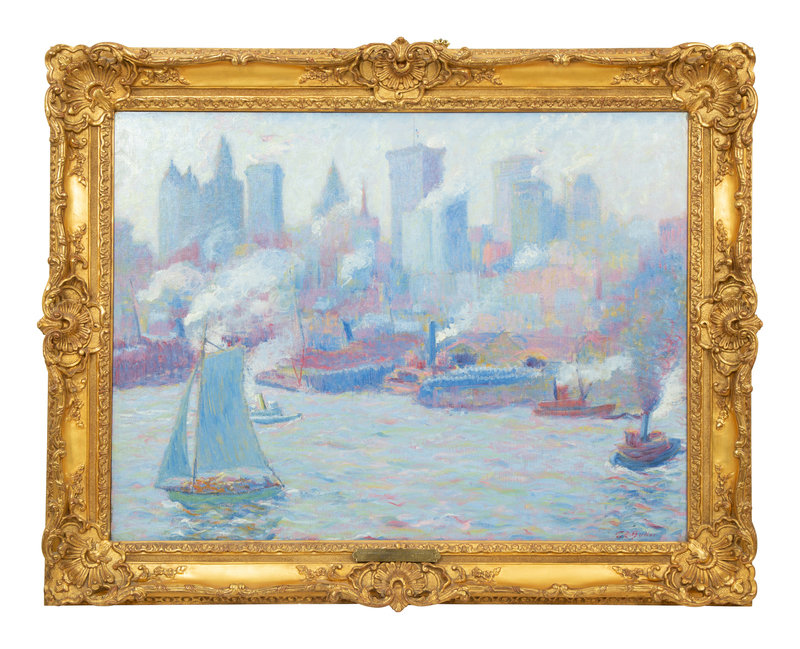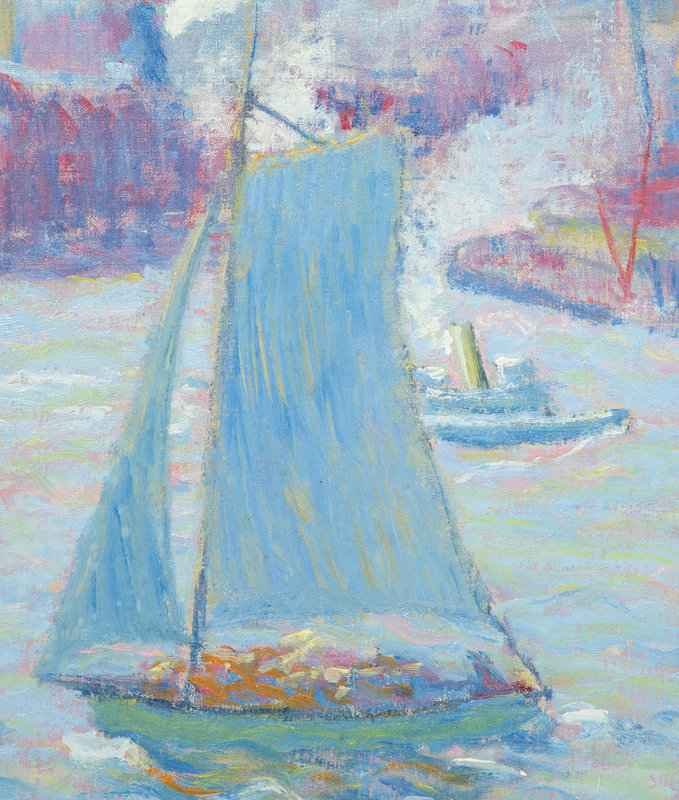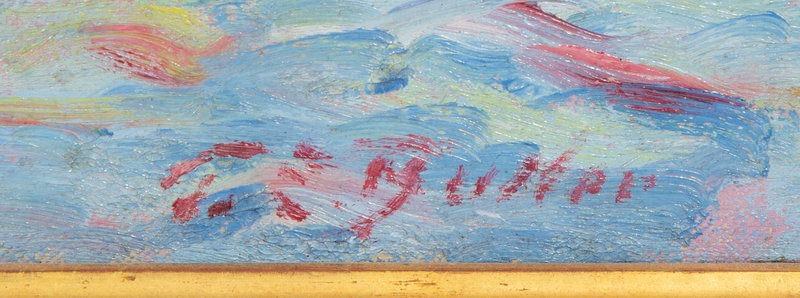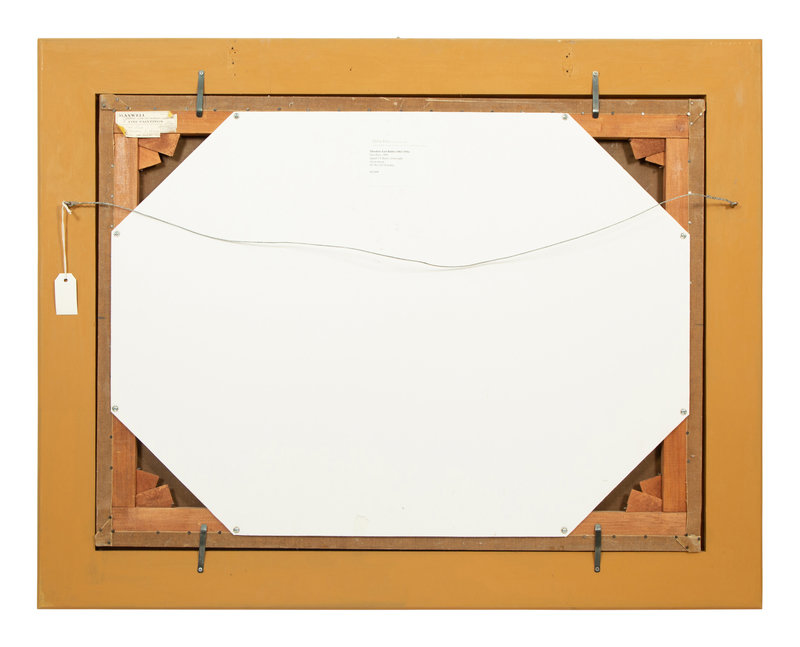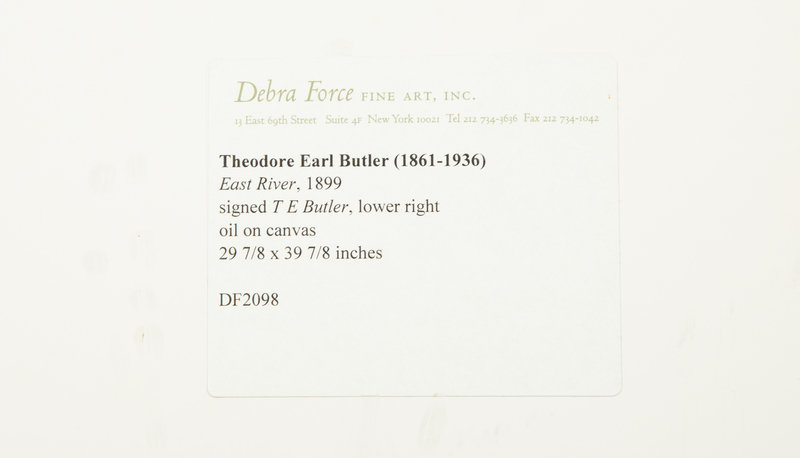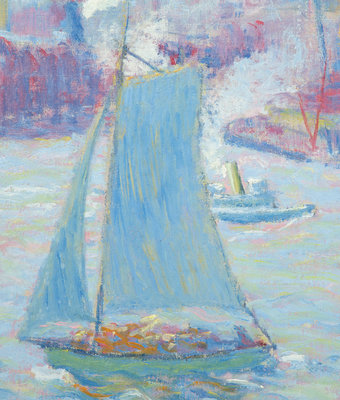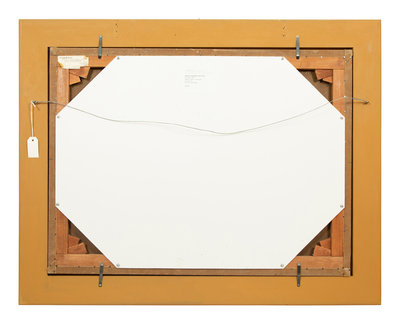Theodore Earl Butler
(American, 1861-1936)
East River, 1899
Sale 1296 - A Lasting Legacy: The Estate of Michael Mennello
Feb 21, 2024
10:00AM ET
Live / Palm Beach
Own a similar item?
Estimate
$30,000 -
50,000
Price Realized
$38,100
Sold prices are inclusive of Buyer’s Premium
Lot Description
Theodore Earl Butler
(American, 1861-1936)
East River, 1899
oil on canvas
signed T.E. Butler (lower right)
39 1/2 x 29 1/2 inches.
This painting will be included in the forthcoming catalogue raisonné being compiled by Patrick Bertrand.
Provenance:
Estate of the Artist
Jimmy Butler, the Artist's son
Spanierman Gallery, New York
Maxwell Galleries, San Francisco
Mr. J. Greenzaid, Washington, DC, by 1982
By descent through the family
McCarty Gallery, Chestnut Hill, Pennsylvania
Debra Force Fine Art, New York
Acquired from the above by the present owner, 2015
Exhibited:
(possibly) New York, Durand-Ruel Galleries, March 1900
San Francisco, California, Maxwell Galleries, Theodore Earl Butler: American Impressionist, June 16 - July 15, 1972, p. 13, illus.
Memphis, Tennessee, The Dixon Gallery and Gardens, An International Episode: Millet, Monet, and their North American Counterparts, November 21 - December 23, 1982, no. 68, p. 202, illus. (also traveled to Evanston, Illinois, Terra Museum of American Art, January 8 - February 13, 1983 and Worcester, Massachusetts, Worcester Art Museum, March 3 - April 30, 1983)
New York, Debra Force Fine Art, Ocean, Rivers, and Pools, Fall 2015
Literature:
William H. Gerdts, Impressionist New York, New York, 1994, no. 123, p. 156, illus.
In the fall of 1899, Theodore Butler left France for New York with his children, Lilly and Jimmy, and his sister-in-law, Marthe Hoschedé. His wife, Suzanne Hoschedé, who was also Claude Monet’s stepdaughter, had died earlier the same year. Butler had settled in Giverny in the 1880s along with other American expatriate artists who were drawn by Monet’s influence, but he left for the United States to be closer to his family after Suzanne’s death. The drastic change between the bucolic landscape of Giverny and the dramatic hustle and bustle of New York clearly inspired the artist. Butler lived in New York before leaving for Europe, and the city changed greatly in the intervening time. He was only to stay for six months, but during that time he produced some of his most acclaimed artworks, including East River, 1899.
In the present painting, Butler depicts a southwest view of the lower Manhattan skyline, possibly from the Brooklyn Bridge or Fulton Street Ferry Landing. The tall building in the center of the composition is most likely the American Surety Building (1896, extant) with the steeple of Trinity Church (1839-46, extant) immediately to the left. Other identifiable buildings include the Commercial Cable Building (1897-1950s) and Manhattan Life Insurance Building (1894-circa 1964). On the far left is the St. Paul Building (1898-1958), with the American Tract Society Building (1894-96, extant) on the right side of the composition.
Although composed of iridescent blues, pinks, and purples that masterfully convey the cold, moist air, East River also shows the harbor as a busy center of industry. The lower half of the large canvas depicts a lone sailing ship and numerous tugboats and ferries steamboats coming in and out of the docks of the East River, with the cityscape towering above. The line of steamboats divides the composition in half, with their rolling smoke clouds floating up to soften the angular grid of the Manhattan skyscrapers. Butler used a variety of brushwork, with smoother strokes for the water, smoke, and clouds, and stronger, diagonal strokes for the ships, harbor, and skyline. The effect dissolves all shapes in space uniformly, creating a filmy, chromatic atmosphere that shimmers and flickers across the luminous canvas. It offers the viewer an incredible rendering of the East River, a poetic homage to its industrialization.
East River was possibly included in a March 1900 exhibition at the New York location of Galerie Durand-Ruel, along with works by the artist's father-in-law, Monet. Three paintings in the exhibition were titled East River and at least one bore the title Brooklyn Bridge. These views of New York were done in Butler’s particular combination of impressionist colors and brushwork with post-impressionist abstract, flattened forms and patterning. More accustomed to Monet’s brand of impressionism, critics’ responses to Butler’s work were mixed. However, the uniqueness of his imagery did not go unnoticed. In a letter to his friend, the artist Philip Leslie Hale, Butler stated that “Papa Durand-Ruel bought one of my New York pictures. That sounds quite simple but means a lot to me.” Likewise, a critic of the International Studio emphasized that the artist “goes to the extreme of vividness” and shows an “intensely penetrating vision” (“American Studio Talk,” International Studio, 10, no. 37 (March 1900), p. IV). In the present work, Butler captures the classic essence of New York, a city that restlessly vibrates with life.
Condition Report
Auction Specialists

